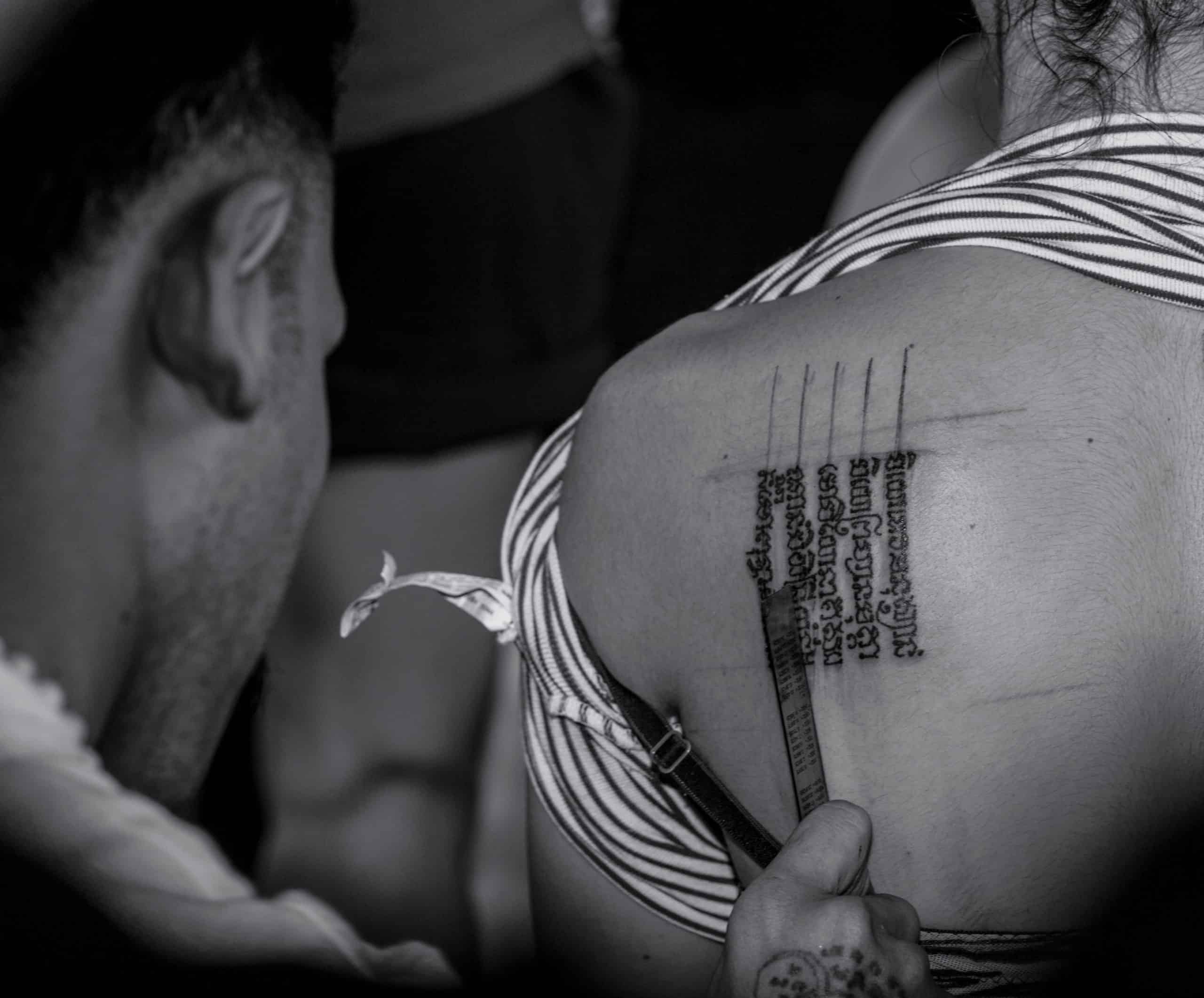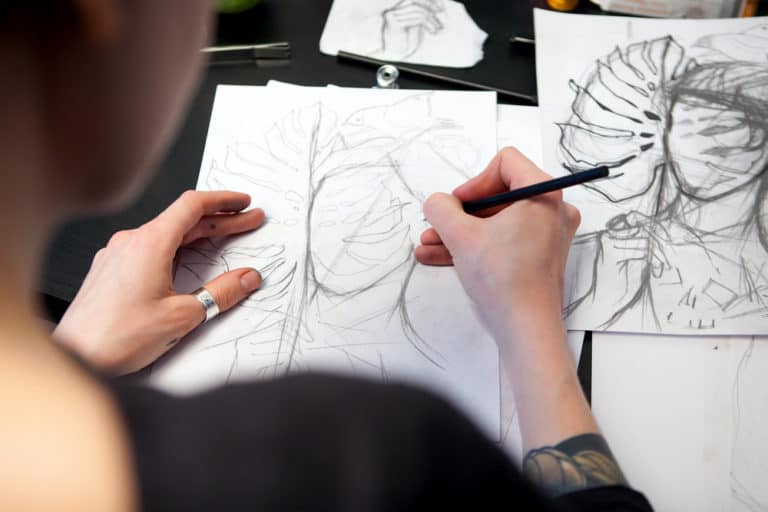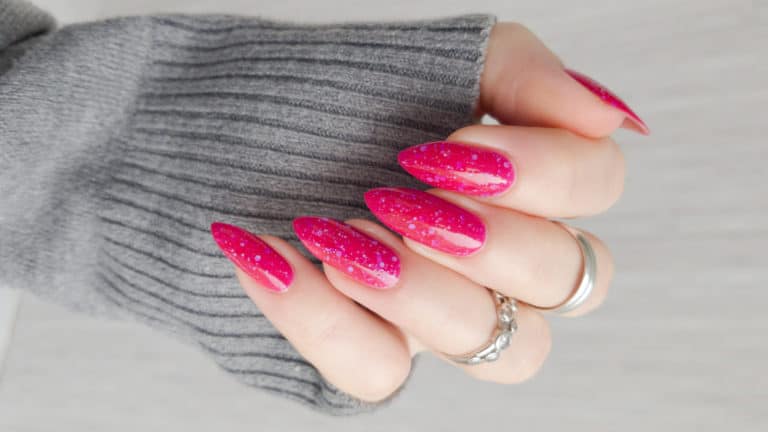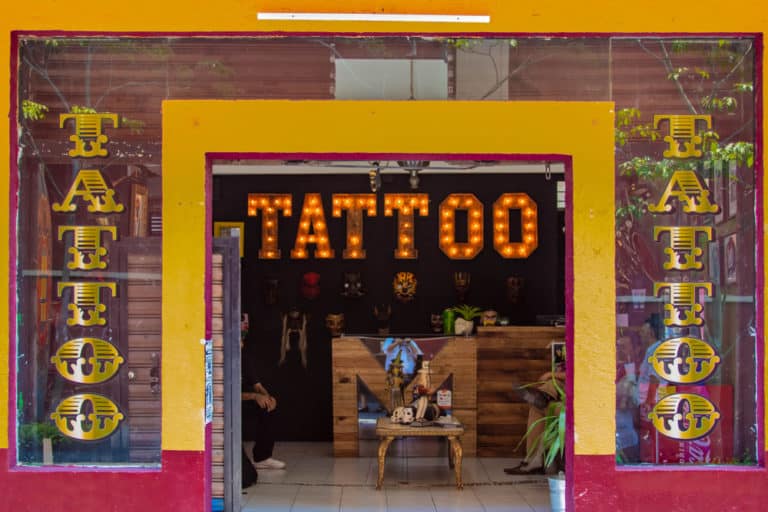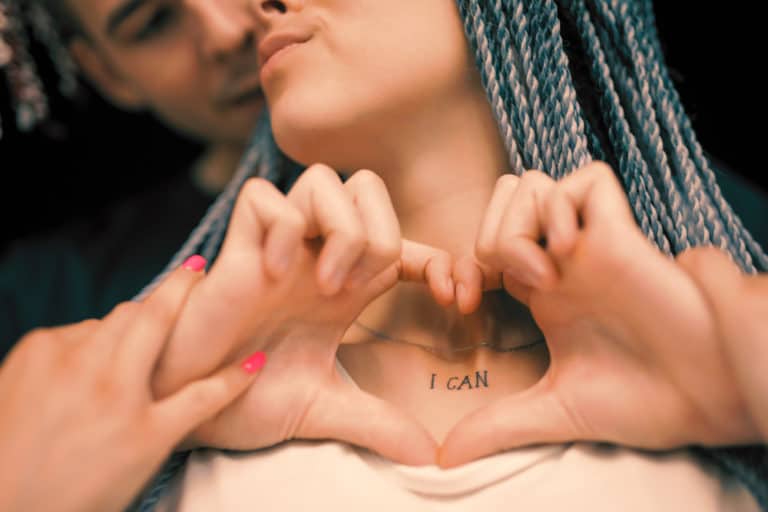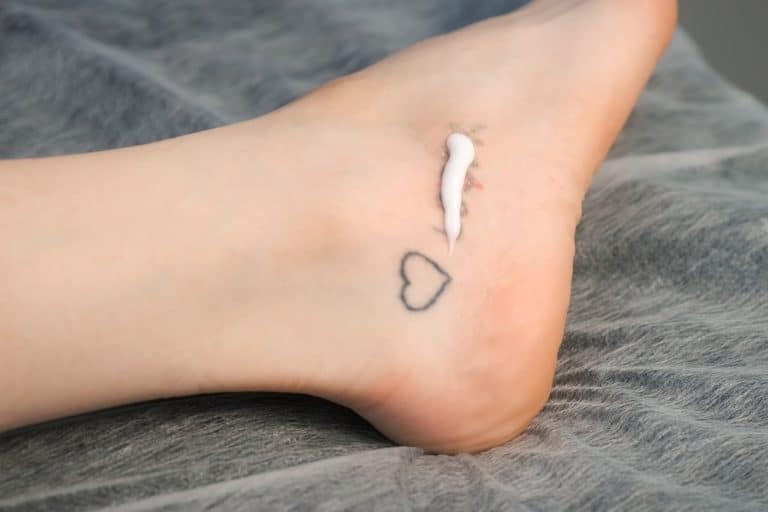What Cultures Have Traditional Tattoos?
Editorial credit: PiercarloAbate / Shutterstock.com
You might have seen people with tattoos on their faces, or their bodies covered in it and wondered what it meant. Is it traditional, or only to make a statement? What cultures have traditional tattoos?
Cultures that have traditional tattoos include:
- Indian Culture/Muslims
- Egyptian Culture
- Maori Tribe (New Zealand)
- Thai Cultures
- Berber Culture (Morocco)
- Polynesian Culture (Samoa)
- Buddhist Culture
- Japanese Culture
- Celtic Culture
- Atayal Culture
- American Culture
Maybe you traveled and saw these tattoos or might want to invest in your tattoo and some of these traditional tattoos caught your eye. It is best to know what these tattoos mean and implement them correctly to keep respect for the culture and their origin.
Traditional Tattoos From Different Cultures
Cultures with tattoos linked to their culture have ways of implementing them, meanings behind them, and definite trademarks to set them apart from other tattoos. It is a historic action that dates back thousands of years in some cultures and has deep meaning to each culture.
1. The Indian Culture Traditional Tattoos
The Indian culture’s tattoos date back as far as 5000 years. These are undoubtedly the most popular tattoos worldwide, and many like to experiment with them. These tattoos are temporary; thus, you won’t have to regret an impulsive decision later.
Dried leaves of the henna plant form a paste, which the artist then applies to the skin in different shapes and forms. It is applied wet, then the design dries, and the shell comes off, leaving a beautiful brown tattoo that lasts two weeks. These tattoos are named “Mehndi,” better known as henna.
The artist applies the paste with a paintbrush or a cone. When you visit India, the Middle East, or Africa, you will find many places that do henna. Some places are on the side of the road, be careful as you don’t know where their product comes from, and it may be dangerous. If it is black, pass. The natural color is orange to dark brown.
Depending on which country, the designs vary between florals and geometric designs. The Indian culture uses these tattoos usually during celebrations and festivals; for example, the artist applies Mehndi to a Hindu bride’s hands, feet, and arms. Festivals like Diwali and Bhai Dooj also call for Mehndi for both men and women. The Muslims also add henna to their celebrations like Eid-ul-Fitr.
These tattoos ultimately portray health, sensuality, and good luck. Some traditions add a specific design that symbolizes a particular meaning.
- Sahasrara – a lotus flower on the palm meaning unity.
- Peacock – is the national bird of India and means prosperity.
- Butterflies and Dragonflies – symbolize new beginnings and transformation.
- Paisley – a mango-shaped design that symbolizes fertility.
- Flowers – meaning purity and grace.
- Vines or leaves – strength
- Eyes – protecting the person against evil
2. The Egyptian Culture Traditional Tattoos
We can see the Egyptian tattoos on photos of cave marking, and Archaeologists date them back to 6000 B.C. The Hieroglyphs were the main form of communication, and it makes sense that they would have placed these as tattoos for specific meanings.
The colors recorded that they used for the tattoos were black, green, and blue. Black symbolized resurrection, green tattoos meant life, and blue meant birth and fertility.
The different hieroglyphs placed strategically tell a story of the person’s heritage, unity, life, and religion. The Egyptians filled their lives with magic and mystery, and their tattoos portrayed it. Modern Egypt is not so focused on tattoos and their meaning, but these tattoos will always have their remarkable history.
- White ostrich feather – symbolizes the goddess Ma’at = balance and purity
- Dot-dash designs – strategically placed on the lower abdomen reaching around to the lower back. This design then sets out and looks like a net protecting the unborn baby.
- Eye of Ra – a right eye symbolizing protection and is usually red.
- Eye of Horus – a left eye in blue and represents healing.
- Ankh – is the most famous Egyptian tattoo. It is a cross with a head-shaped loop at the top and symbolizes life or eternal life.
- Scarab – Dung-beetle symbolized resurrection and transformation
- Pyramids – power and strength
- Pharaoh – Power
3. The Maori Tribe Traditional Tattoos
The tribal tattoos of the Maori culture are sacred and serve as signs of their lives, rankings, and career choices. There are two different types of tattoos. “Ta Moko” is a tattoo that the artist applies to the person’s whole face (usually men) and women stick to the lips, nostrils, and chin.
The second type is called “Kiri Tuhi,” which you will see on the body. The tribal tattoo designs are spiral forms around the shoulder, chest, back, or legs.
It started as a ritual for young men reaching puberty to get a tattoo and women the same. Suppose a Maori tribe member didn’t have a tattoo; it would be an offense against the tribe.
Each tattoo has significant meaning to the Maori tribe. The artist or tribe members would use natural products to produce ink to fill in the markings. The original way of applying the tattoos was to use shark or barracuda teeth or bone to chisel the markings into the skin. The modern way also gives the option of the usual machines.
- Pakati pattern – strength and courage
- Unaunahi – health and abundance
- The Ta Moko tattoos – showed identification of the man, mainly showing their rankings, birth, and career
- Hei Matau – an abstract fish hook means wealth and good health.
The artist places each twist, pattern, and symbol in a specific way and for a specific reason. Research recommends that you don’t try to mimic these tattoos without consent and a complete understanding of these tattoos.
4. The Thai Cultures Traditional Tattoos
In Thailand, the significance of tattoos is quite peculiar. The symbols and letters form the pattern of the so-called “Sak Yant,” and how the Monks apply them makes for an interesting cultural ritual.
A particular tattoo came about through the vision of a Monk. The monks then paired the vision with symbols representing earth, water, wind, and fire. To apply the tattoo, one would use a bamboo stick with the needle attached, penetrating/ tapping the ink into the skin (the least painful method out there).
Most tattoos were popular with warriors to protect and give them strength. Some are easier than others, but the vision of the Monk for you is what you follow. The Monks also apply the tattoos; each tattoo has meaning and gives guidelines for living. The ink’s ingredients are a mystery, as only the Monks know the recipe.
- The five-line Sak Yant – luck and prosperity
- Nine peaks Sak Yant – more luck and prosperity; authorizations over others
- Eight directions Sak Yant – the eight directions of Buddha’s teachings
- Hanuman Sak Yant – courage and strength
- Tiger Sak Yant – authority and power (people in high career positions)
5. The Berber Culture Traditional Tattoos
The Berber culture has these traditional tattoos, also called Amazigh. This culture in Morocco, North Africa, uses tattoos to symbolize wealth, beauty, and health. Women usually got it around openings, such as nostrils, mouth, eyes, and even genitalia, to highlight the vulnerabilities of these areas.
These Berber tattoos were popular amongst women because of the magical powers of fertility. Some also add it as jewelry, marking them with status. Interestingly, when a woman lost her husband, the widow had to get a Berber tattoo from ear to ear, mimicking her late husband’s beard.
Today, these tattoos are dying out as the modern age are not that religious anymore, and most wouldn’t want to tattoo their faces.
- Tree – strength
- Diamond – protects your space
- Khamsa – protects you from evil
6. Polynesian Culture Traditional Tattoos
Even though the Maori are part of the Polynesian islands, they have their own culture with symbolic tattoos. Here, under the Polynesian culture, we have the Samoan people who most likely started the craze of tattoos worldwide. Their name for tattoos is “tatau,” and many believe that the word we use today came from their native word.
The traditional “tatau” they have is different for men and women. The men’s tattoos are called “pe’a” and cover the lower body from the waist to the knees. The women’s tattoo is called “malu” and stretched over the top of the leg and looks more feminine.
The application of Polynesian tattoos is a bit more painful than others, where a cutting tool with tiny needles taps the ink into the skin. The bigger the surface of the tattoo, the more needles are necessary.
Polynesian tattoos symbolize turtles, eyes, ocean waves, spearheads, shark teeth, or tiki. All these have significant meanings, and the placement of tattoos has an even deeper purpose.
- On the joints – union and commitment
- Feet and legs – separation, choice, and progress
- From the elbow to the hands – creation
- Upper arm and shoulders – strength and bravery
- From the navel to the thigh – procreation, sexuality, and courage
- Navel to the chest – sincerity, and generosity
- Head – connects to their god Rangi and symbolizes spirituality and wisdom.
7. Buddhist Culture Traditional Tattoos
The Buddhist culture implemented the “mandala” before we saw it everywhere. It is usually a sign of completion, unity, and eternity. The outside edges are always the exact distance from the center. Mandalas are part of Buddhist rituals and meditations, and later they decided to get tattoos.
There are various styles and patterns to suit each individual’s personality. Apart from mandalas, there are other symbols that Buddhists incorporate into their tattoos.
- Small Buddha – happiness and strength
- Buddha inside a circle – circle of life
- Any form of a mandala – body and mind balance
8. Japanese Culture Traditional Tattoos
The Japanese tattoos are known as “Irezumi.” These can be pretty colorful and complex, with different meanings and significance. It has existed for many years B.C and over time, started to get associated with jailbirds and the mafia.
The Japanese culture applies these tattoos for status, spiritual signs, decorations, and punishment—some designs cover the whole body except the neck and middle chest. The reason is to wear clothes and cover everything up.
The dragon or “Ryu” is the most popular in Japanese culture and symbolizes immense blessing, strength, and wisdom. The other characters are very demon-like, and the colors portray their red, blue, or green skins with vicious faces.
9. Celtic Culture Traditional Tattoos
The Celtic culture was initially in central Europe and later spread over the continent, with Scotland and Ireland being their significant countries. Celtic tattoos are celebrations of the culture, and even though it was a sacred act for the Celts of old, nowadays, the Irish celebrate their ancestors through it.
The Celtic tattoos are blue, and the culture used them to intimidate the enemy. Made from indigo plant leaves, the historic Celts rubbed the paste on the punctured skin to form the tattoo.
- Triskele – portrays a triple circle meaning earth, sky, and water. It can also include anything else in the three’s like past, present, and future or father, mother, child.
- Celtic cross – Irish heritage
- Celtic wolf – protection
- Triquetra – unity and everlasting life
- Celtic knot – forever bond between two people
10. Atayal Culture Traditional Tattoos
The Taiwanese have this culture that uses a tattoo called “ptasan.” It is a facial tattoo that speaks honor, and you have to deserve the honor to get it. Boys get it on their foreheads during a ceremony celebrating their coming of age and accomplished training in hunting. Girls get it across their mouths after they succeed in the art of weaving (usually around puberty).
After a man got married, he also had to get a tattoo on his chin. All saw these as beautiful and an honor. After the Chinese took over Taiwan in the 1940s, this ritual started to wear down, and nowadays, only the elders still have these facial tattoos with their significance and ritual.
11. American Culture Traditional Tattoos
The tattoos we will be able to point out anywhere are American tattoos with their hearts, swallows, ships, daggers, mermaids, and anchors in striking colors and bold outlines. These started with sailors and soldiers, and later on, during the 1950s, motorcyclists hopped onto the trend. During the 1970s, the punk generation also started adding tattoos.
The American tattoos have evolved but still keep their primary outlines. They should look like a sketch, with black and bold outlines, minimal shading, and saturated with color.
Conclusion
Traditional tattoos can be interesting, daring, and sometimes misunderstood. Each culture treasures these symbols and signs and wears them with pride. Please take caution if you want to imitate any of these, and first, do your research to ensure you do not disrespect the culture and their rituals.
Some of my favorite designs, tattoo books, and aftercare products, selected for you
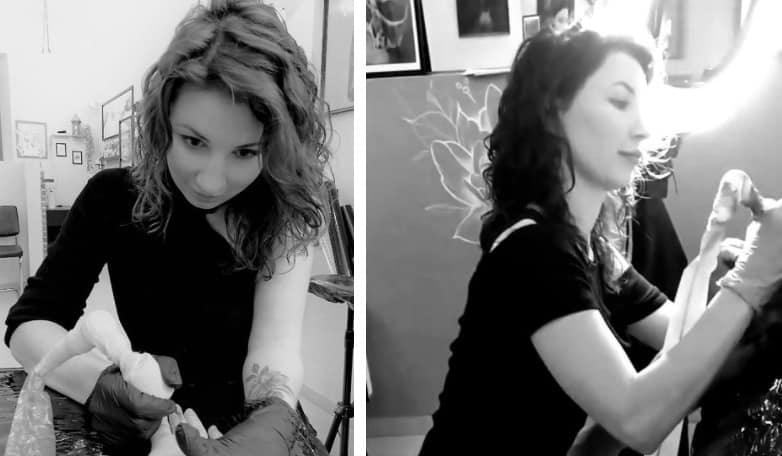
Thank you for reading my article, I hope that you have found it helpful. If you would have trouble finding ideas for your tattoo, wonder what is meaning of design that you have found or what to buy for aftercare, to make sure that your tattoo will be healing quickly and easily, here are some of my favorite products in one place, hope that this will also help.
Design and tattoo ideas
For some ideas you can have a look at those 3 books with hundreds of designs that I use with my clients, they are available on Amazon for Kindle or in classic, paper version (links below):
- Great Book of Tattoo Designs, Revised Edition: More than 500 Body Art Designs (Fox Chapel Publishing) Fantasy, Celtic, Floral, Wildlife, and Symbol Designs for the Skin by Lora Irish
- The Big Book of Small Tattoos – Vol.1: 400 small original tattoos for women and men by Roberto Gemori
- Tiny Tattoos: Over 1,000 Small Inspirational Artworks by Rebecca Vincent.
Tattoo meaning
If you would like to read more about the meaning of different tattoo styles and designs before you will decide what you would like to have, I can recommend a book that was really useful for me when I was starting my tattoo adventure – it’s “Conscious Ink: The Hidden Meaning of Tattoos” by Lisa Barretta (through the link you can find it on Amazon for around $10).
Tattoo aftercare
The skin at the tattoo site often dries out. To prevent it and speed up healing for my clients, I usually recommend one of those tattoo aftercare balms (you can find them on Amazon):
References
- https://www.expeditionistmag.com/home/8-places-to-find-the-historical-art-of-tattoos-around-the-globe
- https://www.outlookindia.com/outlooktraveller/explore/story/70053/travel-around-the-world-with-these-5-tattoos-from-different-cultures
- https://www.lonelyplanet.com/articles/top-tattoo-styles-from-around-the-world
- https://whenonearth.net/7-of-the-unique-traditional-tattoo-styles-around-the-world/

